There are several artificial intelligence trends that are shaping the development and deployment of AI technologies. Below are the top 6 popular artificial intelligence trends in the world.
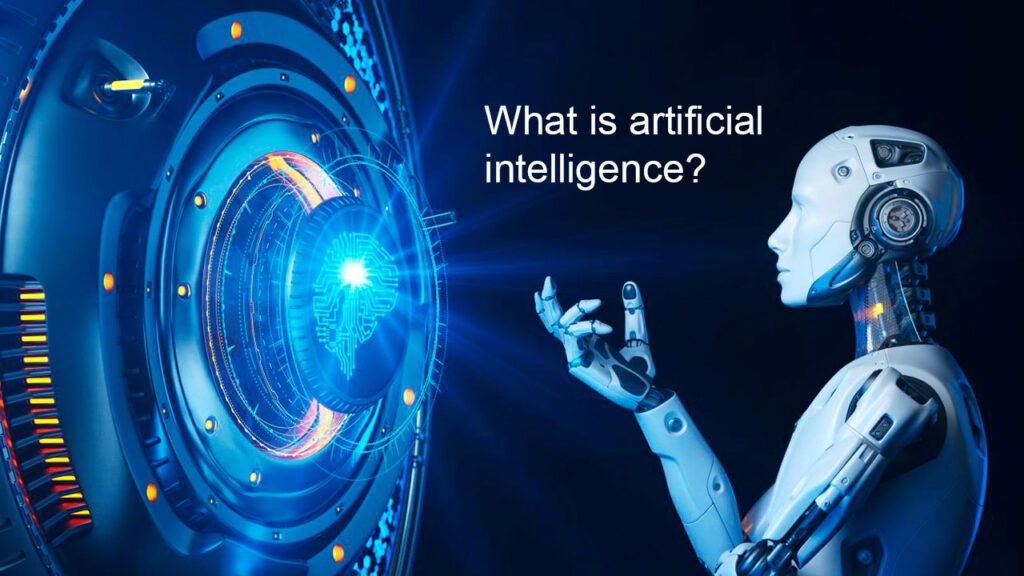
What is artificial intelligence?
Artificial Intelligence (AI) refers to the simulation of human intelligence in machines that are designed to think and act like humans. AI is achieved by creating algorithms and computer programs that can perform tasks that would normally require human intelligence, such as recognizing speech, making decisions, solving problems, and learning from experience.
AI systems can be trained on large amounts of data to identify patterns and make predictions, and they can be designed to improve their performance over time through machine learning. The goal of AI is to create machines that can perform tasks that are normally associated with human intelligence, such as visual perception, speech recognition, decision-making, and natural language processing.
There are several subfields within AI, including:
- Machine learning: This involves the development of algorithms that enable machines to learn from data and improve their performance over time.
- Natural language processing (NLP): This involves the development of algorithms that enable machines to understand, interpret, and generate human language.
- Computer vision: This involves the development of algorithms that enable machines to interpret and understand visual data from the world, such as images and videos.
- Robotics: This involves the integration of AI technologies with physical robots to create intelligent machines that can interact with the world.
- Expert systems: This involves the development of AI systems that can perform specific tasks and make decisions based on a set of rules and knowledge.
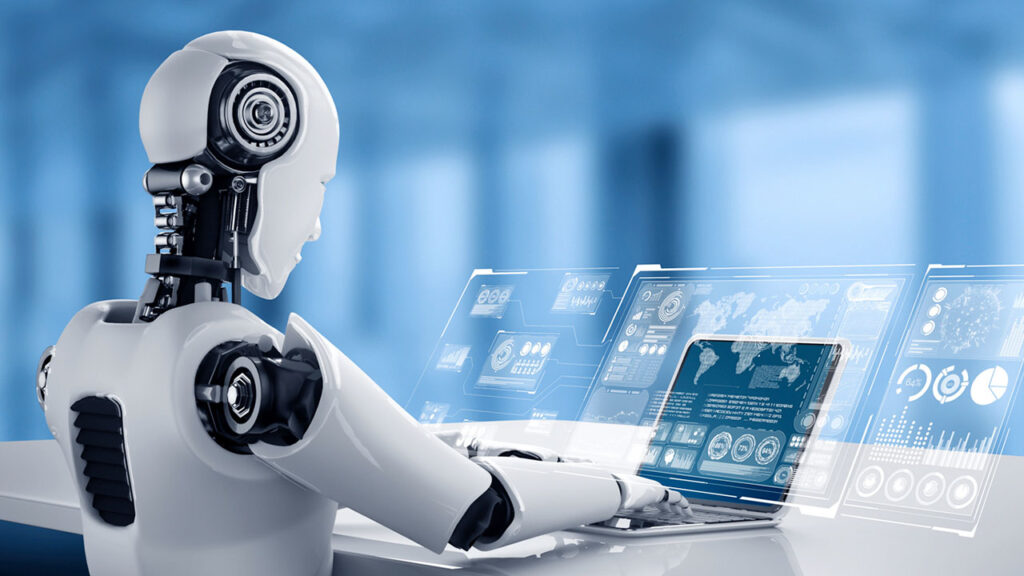
Top 6 artificial intelligence trends
1. Edge AI
Edge AI refers to the deployment of artificial intelligence algorithms and systems at the edge of a network, closer to the source of data. The edge can refer to devices such as smartphones, IoT sensors, and cameras, as well as gateways and other network devices.
Edge AI is designed to address the challenges posed by the increasing amounts of data generated by IoT devices, which can strain the bandwidth and processing capabilities of centralized data centers. By deploying AI algorithms and models at the edge, data can be processed and analyzed closer to the source, reducing the amount of data that needs to be transmitted over the network and reducing latency.
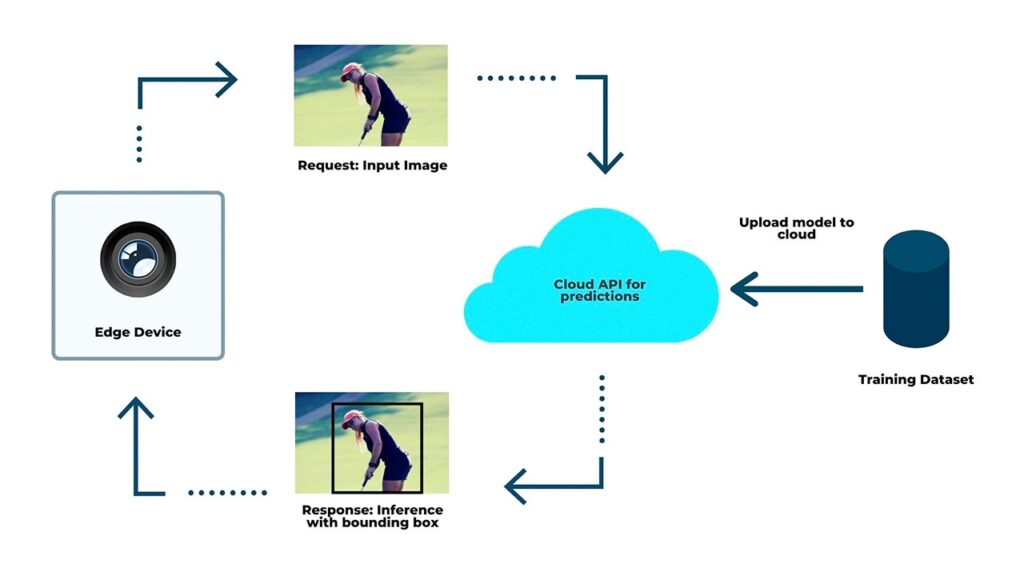
Edge AI also enables real-time decision-making, as the data can be processed and analyzed in near real-time, without the need for sending it back to a centralized data center for processing. This is particularly useful in applications such as video analytics, where decisions need to be made in real-time based on the data being captured by cameras.
In summary, Edge AI enables the deployment of AI technologies closer to the source of data, providing faster processing times, reduced bandwidth requirements, and the ability to make real-time decisions based on data generated at the edge of a network.
2. Explainability and interpretability
Explainability and interpretability refer to the ability of artificial intelligence (AI) systems to provide clear and transparent explanations for their decision-making processes.
Explainability refers to the degree to which the reasoning behind an AI system’s decisions can be understood and communicated to human users. This is important because in many applications, such as healthcare or finance, it is important to understand the reasons behind an AI system’s decisions in order to trust the system and ensure that it is making decisions that are ethical and fair.
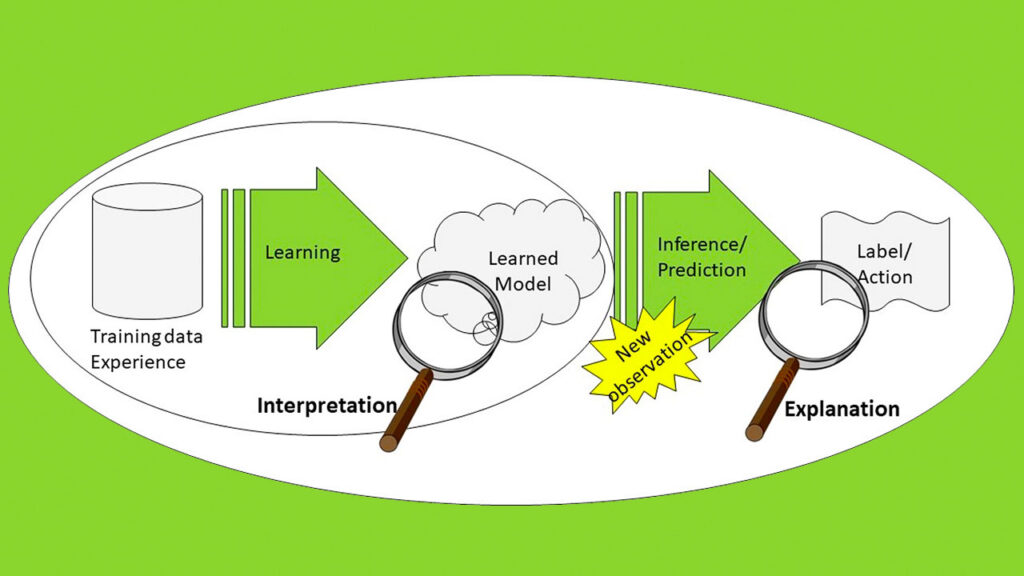
Interpretability, on the other hand, refers to the ability of an AI system to provide insights into how it arrived at its decisions. This can help to identify any biases or errors in the decision-making process and can help to improve the system’s overall performance.
There are several approaches to improving explainability and interpretability in AI systems, including:
- Model interpretability: This involves making the internal workings of an AI model more transparent and understandable, such as by using simpler models or highlighting the most important features used to make a decision.
- Model distillation: This involves creating a simpler, more interpretable model from a larger, more complex model, in order to understand the key factors that contribute to the model’s decisions.
- Explanation generation: This involves generating human-understandable explanations for the decisions made by an AI system, such as by highlighting the key factors that contributed to the decision.
Overall, explainability and interpretability are important considerations in the development and deployment of AI systems, as they help to build trust in these systems and ensure that they are making decisions that are fair, ethical, and transparent.
3. Reinforcement learning
Reinforcement learning is a type of machine learning that focuses on teaching an artificial intelligence (AI) agent to make decisions by trial and error. It is based on the idea of an AI agent learning from experience, by receiving rewards or penalties for its actions, and adjusting its behavior accordingly.
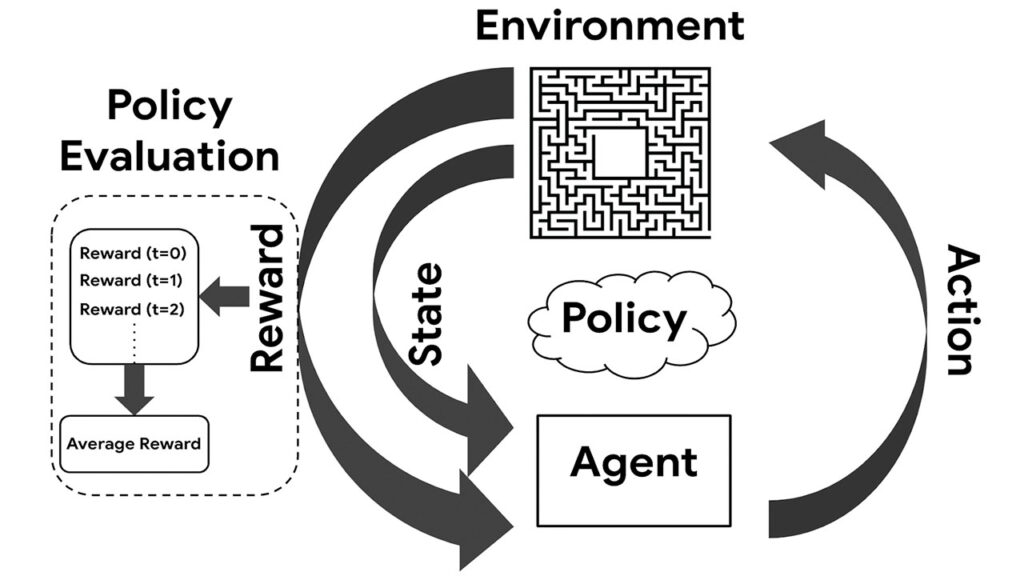
In reinforcement learning, an AI agent interacts with an environment by performing actions and observing the results. The goal of the AI agent is to maximize a reward signal that is provided by the environment. The agent learns to make better decisions over time by adjusting its behavior based on the rewards and penalties it receives.
Reinforcement learning has several key components:
- Environment: This represents the world that the AI agent is operating in, and includes the state of the environment, the actions that the agent can perform, and the reward signal that the agent receives for its actions.
- Agent: This represents the AI system that is learning and includes the decision-making mechanism that the agent uses to determine which action to perform.
- Policy: This represents the strategy that the AI agent uses to determine which action to perform in a given state of the environment. The policy is updated over time as the agent learns from experience.
- Value function: This represents the expected future reward that the agent can receive for a given state or action. The value function is used by the agent to determine the best action to take in a given state.
Reinforcement learning has a wide range of applications, including robotics, game playing, and autonomous vehicles. It has proven to be a powerful technique for teaching AI agents to make decisions in complex, dynamic environments.
4. Generative models
Generative models are a type of machine learning model that is used to generate new data that is similar to the data used to train the model. Unlike discriminative models, which are used to classify or predict outcomes based on input data, generative models learn the underlying probability distribution of the training data and use this information to generate new data that is similar to the original data.
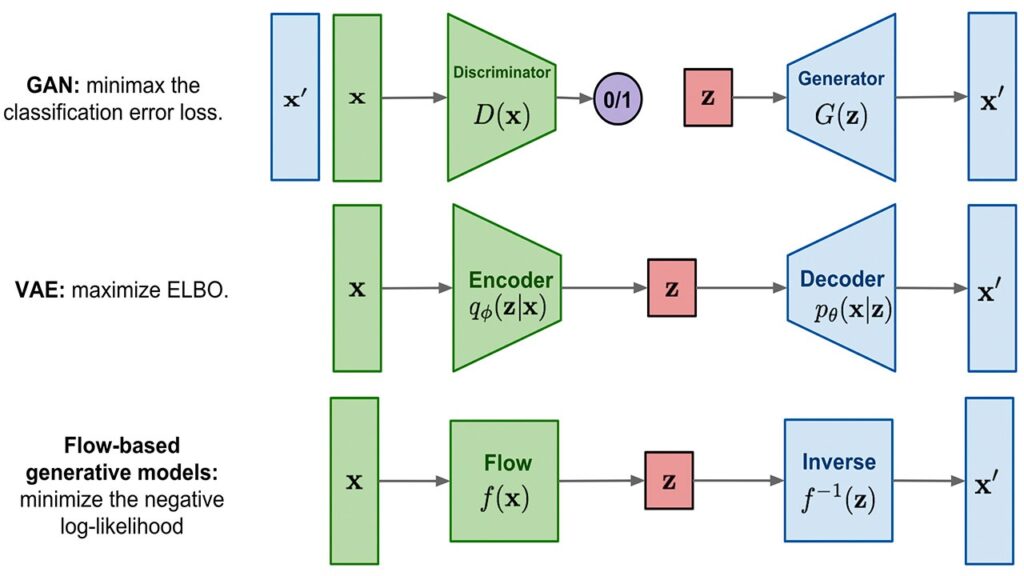
There are several types of generative models, including:
- Generative Adversarial Networks (GANs): These are a type of generative model that uses a pair of neural networks, a generator and a discriminator, to learn the underlying distribution of the training data. The generator network creates new data samples, while the discriminator network evaluates the authenticity of the generated samples and provides feedback to the generator network. Over time, the two networks work together to produce more and more realistic data samples.
- Variational Autoencoders (VAEs): These are a type of generative model that uses a combination of encoding and decoding to generate new data samples. The encoding part of the model maps the input data to a lower-dimensional representation, while the decoding part of the model maps the lower-dimensional representation back to the original data space. The goal of the model is to learn a representation that can be used to generate new, similar data samples.
- Autoregressive Models: These are a type of generative model that generate new data samples one piece at a time, based on the previous pieces of the generated data. For example, an autoregressive language model might generate new words in a sentence one at a time, based on the previous words in the sentence.
Generative models have a wide range of applications, including image and audio synthesis, language generation, and anomaly detection. They can also be used to generate new data samples for use in supervised learning models, which can help to improve the performance of these models by increasing the size and diversity of the training data.
5. Multimodal AI
Multimodal AI refers to the use of multiple modalities, or sources of information, to improve the accuracy and performance of artificial intelligence (AI) systems. Modalities can include text, images, audio, video, and other forms of data that can be used to provide information to an AI system.
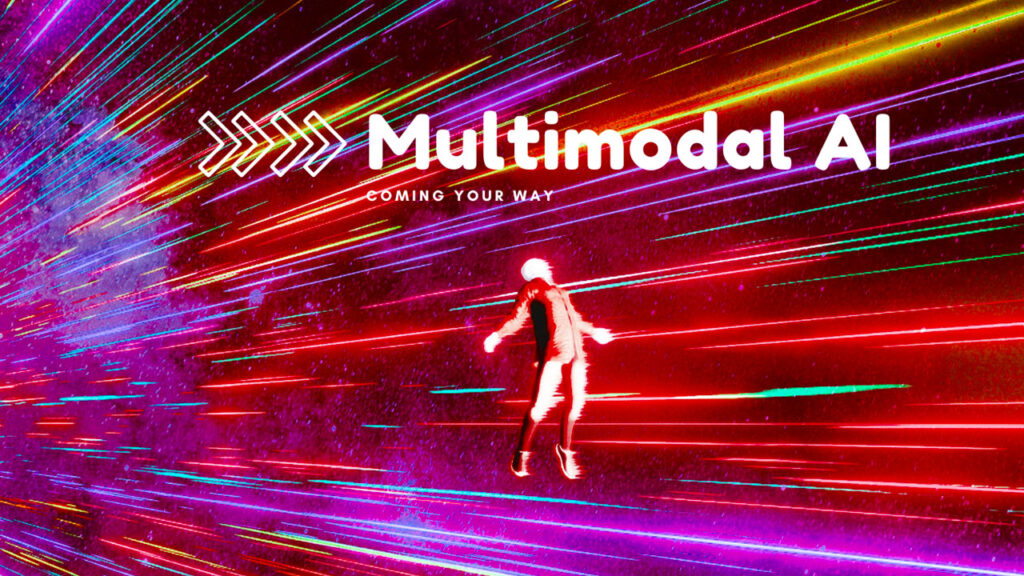
Multimodal AI has several advantages over traditional AI systems that use only a single modality of data. For example:
- Improved accuracy: By using multiple modalities of data, multimodal AI systems can gain a more complete understanding of the task they are trying to perform, leading to improved accuracy.
- Increased robustness: Multimodal AI systems are less likely to fail in situations where one modality of data is unreliable or missing, as they can rely on other modalities for information.
- Enhanced user experience: Multimodal AI systems can provide a more natural and intuitive experience for users, as they can interact with the system using a variety of input methods, such as text, voice, or touch.
Examples of multimodal AI systems include virtual assistants that can understand and respond to both text and voice inputs, and image recognition systems that can recognize objects in photos and videos.
Multimodal AI is an active area of research and development, with new technologies and algorithms being developed all the time to improve the performance of these systems and make them more accessible and usable for a wide range of applications.
6. Ethical and social considerations

Ethical and social considerations are important aspects of artificial intelligence (AI) development and deployment, as AI has the potential to significantly impact society and individuals in both positive and negative ways. Some of the key ethical and social considerations associated with AI include:
- Bias and discrimination: AI systems can perpetuate and amplify existing biases and discrimination if they are trained on biased data or if they are not designed with fairness and transparency in mind.
- Job displacement: AI has the potential to automate many tasks that are currently performed by humans, which could lead to job losses and economic disruption.
- Privacy and security: AI systems often require access to large amounts of personal data, which raises concerns about privacy and data security.
- Responsibility and accountability: It are important to determine who is responsible and accountable when AI systems make decisions that have significant consequences for individuals or society.
- Explanation and interpretability: AI systems can be difficult to understand and interpret, which raises concerns about their transparency and accountability.
- Autonomy and control: As AI systems become more advanced and capable, questions arise about how much control humans should have over these systems and how much autonomy they should be allowed.
Given the potential impact of AI on society and individuals, it is important for researchers, developers, and policymakers to consider these ethical and social considerations and work to address them in a responsible and thoughtful manner. This can include developing ethical frameworks and best practices for AI development, conducting impact assessments to identify and mitigate potential negative consequences, and engaging in public dialogue and debate to ensure that the development and deployment of AI is aligned with the values and priorities of society.
Some popular artificial intelligence applications
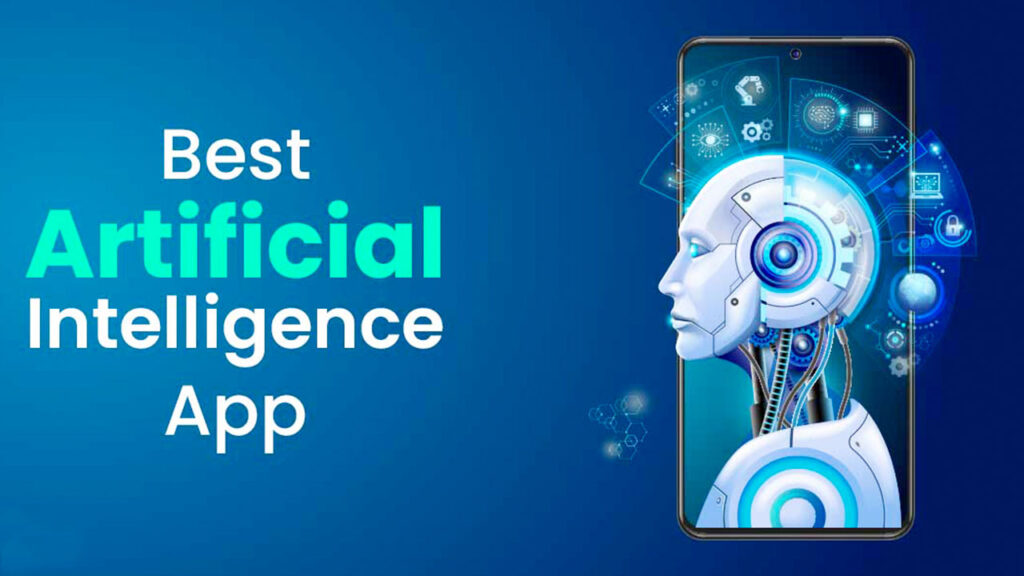
There are many artificial intelligence (AI) apps available today that are designed to improve our lives and make our lives easier in a variety of ways. Here are some of the best AI apps:
- Siri and Google Assistant: These virtual assistants use AI to understand and respond to natural language commands and queries. They can be used to perform a wide range of tasks, such as setting reminders, sending messages, and making phone calls.
- Waze: This GPS navigation app uses AI to provide real-time traffic updates and route suggestions based on current road conditions and the location of other drivers.
- Google Photos: This app uses AI to automatically organize and categorize your photos, making it easier to find the pictures you are looking for. It also uses AI to enhance your photos, removing blemishes and improving the overall quality of your images.
- Robinhood: This app uses AI to provide personalized investment advice and recommendations based on your financial goals and risk tolerance.
- MyFitnessPal: This app uses AI to provide personalized nutrition and exercise recommendations based on your fitness goals and activity levels.
- Replika: This AI-powered chatbot app uses machine learning algorithms to learn from your conversations and develop a personal relationship with you.
- Grammarly: This writing app uses AI to check your grammar, spelling, and punctuation, and provide suggestions for improvement.
- Vivint: This smart home app uses AI to automate and control a variety of connected devices, such as lights, locks, and thermostats, using voice commands or a mobile app.
These are just a few examples of the many AI apps that are available today. As AI continues to advance, we can expect to see more and more apps that use AI to improve our lives in new and innovative ways.


